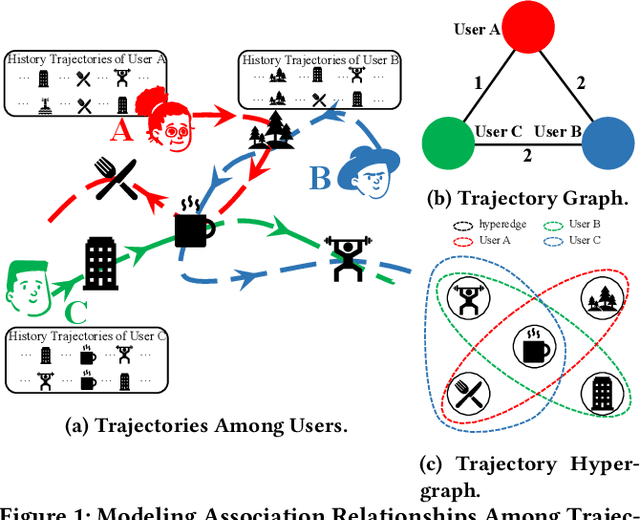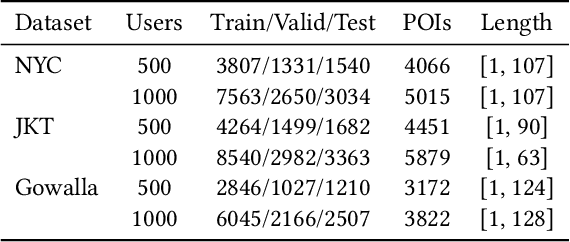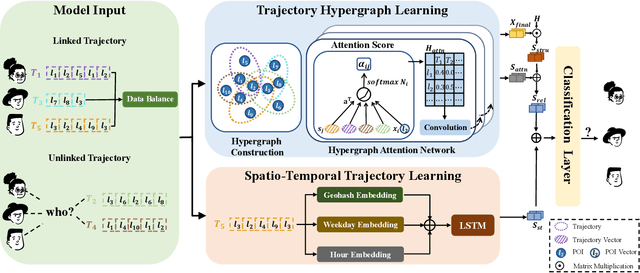HGTUL: A Hypergraph-based Model For Trajectory User Linking
Paper and Code
Feb 11, 2025



Trajectory User Linking (TUL), which links anonymous trajectories with users who generate them, plays a crucial role in modeling human mobility. Despite significant advancements in this field, existing studies primarily neglect the high-order inter-trajectory relationships, which represent complex associations among multiple trajectories, manifested through multi-location co-occurrence patterns emerging when trajectories intersect at various Points of Interest (POIs). Furthermore, they also overlook the variable influence of POIs on different trajectories, as well as the user class imbalance problem caused by disparities in user activity levels and check-in frequencies. To address these limitations, we propose a novel HyperGraph-based multi-perspective Trajectory User Linking model (HGTUL). Our model learns trajectory representations from both relational and spatio-temporal perspectives: (1) it captures high-order associations among trajectories by constructing a trajectory hypergraph and leverages a hypergraph attention network to learn the variable impact of POIs on trajectories; (2) it models the spatio-temporal characteristics of trajectories by incorporating their temporal and spatial information into a sequential encoder. Moreover, we design a data balancing method to effectively address the user class imbalance problem and experimentally validate its significance in TUL. Extensive experiments on three real-world datasets demonstrate that HGTUL outperforms state-of-the-art baselines, achieving improvements of 2.57%~20.09% and 5.68%~26.00% in ACC@1 and Macro-F1 metrics, respectively.
 Add to Chrome
Add to Chrome Add to Firefox
Add to Firefox Add to Edge
Add to Edge